Riverwood
Introduction
Text-to-speech Audio
This historic Nashville property connects four distinct periods of development of the house that also reflect the larger community. The property's first owners of European descent developed a two-story stone home in the 1790s and made their fortune as traders. By the 1830s, the growth of the plantation economy in this region can also be seen in this location and by the 1850s Riverwood was a substantial 2,500-acre plantation. Most of the land was sold in the years that followed similar to other vast plantations. During the 1920s, the historic mansion was renovated and became the science of lavish dinner parties. The Cooper family owned Riverwood from the 1850s to the 1970s, and the property was added to the National Register of Historic Places in 1977. Riverwood Mansion has been one of Nashville's most popular sites for weddings and other events since the 1990s, on its remaining eight acres. It also is known locally for a legendary spirit known as the Lady in Gray, who reportedly has been glimpsed by many people over the years.
Images
Front of Riverwood in 1940 photo, Historic American Buildings Survey (HABS TN-128) by Lester Jones
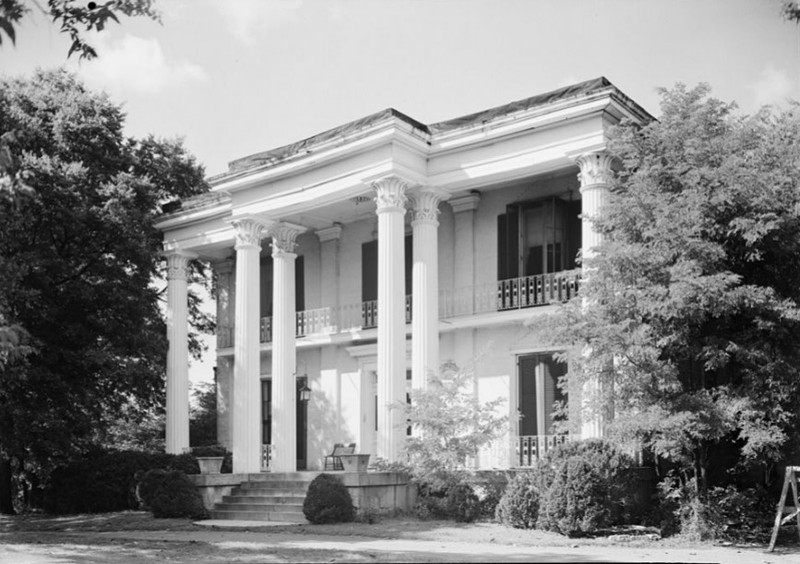
Riverwood (white arrow), owned by H. Cooper, on 1871 Davidson County map (Colton & Co.)
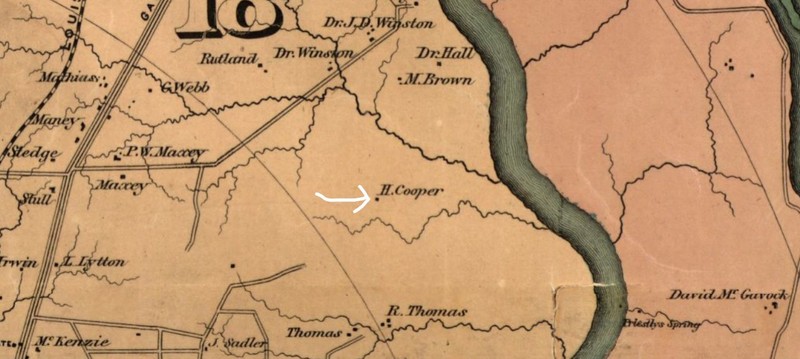
Riverwoood (yellow arrow) by Porter Pike, owned by D.B. Cooper, on circa 1910 county map (Southgate & Son)
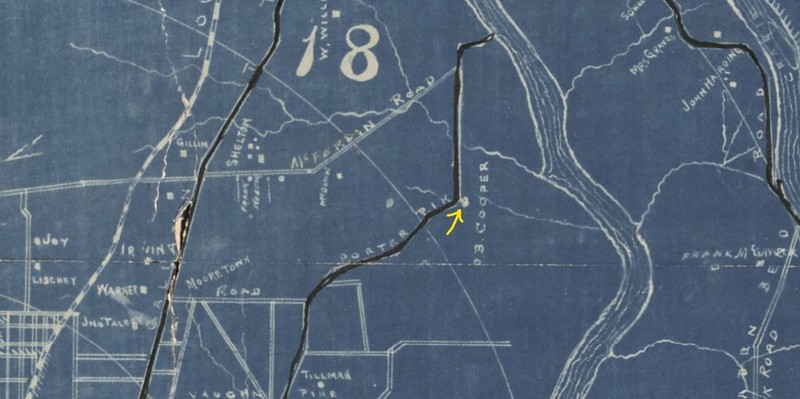
Detail of Riverwood main entrance in 1940 HABS photo by Lester Jones
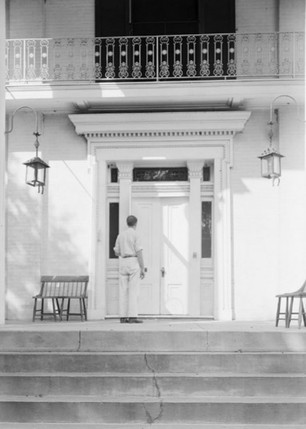
Northwest side of Riverwood in 1976 photo for NRHP (Leonard E. Marsh)
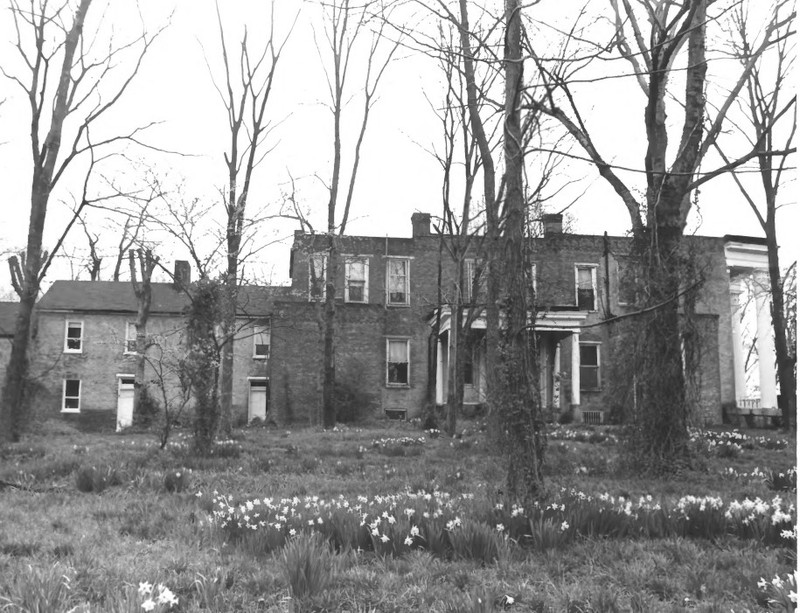
Backstory and Context
Text-to-speech Audio
According to family records, seven U.S. presidents have visited Riverwood: Andrew Jackson, James K. Polk, Franklin Pierce, Andrew Johnson, Grover Cleveland, Theodore Roosevelt, and William H. Taft. The property was purchased in 1795 by Philip Phillips, a land speculator. Alexander James Porter, an Irish immigrant, and wealthy linen merchant, bought the property in 1798 and built a brick two-story house. The floor plan included four rooms on each floor, with each room 16 by 16 feet and a central fireplace. The property passed to Alexander's son, James Porter. A new house was built 20 feet away in the 1830s and was called Tammany Wood; the house had a footprint of about 53 by 38 feet and fireplaces on end walls. A room on the first floor of the older house became the kitchen for the new residence; the rest of the older house reportedly became quarters for enslaved people. James died in 1853. Both houses were renovated and were joined into one large, Greek Revival style mansion in the 1850s by James' only son, Alexander Porter. The tall Corinthian wooden columns and a twenty-foot addition date to the 1850s.
The Cooper family owned Riverwood from 1859 to the 1980s. William Frierson Cooper, an attorney. reportedly named the property Riverwood after his 1859 purchase; the property included only 851 of the original 2,500 acres. William F. served as Chief Justice of the Tennessee Supreme Court from 1878 to 1886. After Judge Cooper died in 1909, the property was divided into five tracts; his brother Duncan Brown Cooper inherited the tract containing the mansion. Duncan was a veteran of the Civil War and had been a colonel in the Confederate cavalry under Nathan Bedford Forrest. At one point, Duncan owned a Nashville newspaper, the American. He and a colleague, Edward "Ned" Carmack later became bitter rivals in the newspaper business and in politics. Duncan and Carmack exchanged gunfire in downtown Nashville in 1908 and Carmack was killed. Duncan was convicted of second-degree murder but later was given a pardon by the governor.
When Duncan died in 1922, the property passed to his daughter Sarah. Sarah later became the wife of Dr. Lucius Burch, the Vanderbilt School of Medicine dean. The mansion underwent interior renovations in the 1920s for plumbing upgrades and additional bathrooms. The Burch family became well-known for throwing wonderful parties at Riverwood. Once you were added to the guest list for their lavish Christmas dinner parties, you were said to be invited for life. Dr. Burch passed away in 1959, and Sarah sold off parts of the property, retaining eight acres. The surrounding residential subdivision, dating to the 1960s, was named Burchwood Gardens and was once part of Riverwood.
Lucius Burch, Jr. was born at Riverwood and became an attorney and civil rights activist. Burch is known for volunteering to represent Dr. Martin Luther King Jr. in an effort to overturn an injunction against marching for civil rights in Memphis. After Sarah (known to her friends as "Miss Sadie") died in 1975 at age 98, the next owner was Lucia Burch Doggrel, the great-granddaughter of Duncan B. Cooper. The mansion was mainly empty for two decades. In the meantime, the house was damaged by vandals while owners planned for a renovation that didn't happen. In the late 1990s, Joseph and Jackie Glynn purchased Riverwood and the mansion was finally restored to become an events venue. Three investors - Debbie Sutton, Matt Wilson, and Steven R. Shelton - bought the property in 2015. Riverwood continues to host weddings, fundraisers, and corporate events.
Sources
Cox, Debie O. Nashville's Riverwood Mansion, Nashville History. July 5th, 2013. Accessed September 27th, 2022. https://nashvillehistory.blogspot.com/2013/07/nashvilles-riverwood-mansion.html.
Fox, Randy. A Mansion in the 'Hood: Riverwood Mansion Opens its Doors to the Arts, The East Nashvillian. Accessed September 27th, 2022. https://www.theeastnashvillian.com/a-mansion-in-the-hood/.
Haggard, Amanda. Gimme Shelter 2018: Riverwood Mansion, Nashville Scene. November 8th, 2018. Accessed September 27th, 2022. https://www.nashvillescene.com/news/coverstory/gimme-shelter-2018-riverwood-mansion/article_7bbb4f5b-b1c6-5fae-a078-12d603cee0bd.html.
Jones, Crystal Hill. Manning, Naomi C. Meadows, Melanie J. Nashville's Inglewood. Images of America. Charleston, SC. Arcadia Publishing, 2009.
Peterson, Charles E. Historic American Buildings Survey of Riverwood, Vicinity of Nashville, Tenn. Volume HABS TENN-128. St. Louis, MO. Department of the Interior, Central Unit, 1940.
Sloan, Denise Carter. Marsh, Leonard E. NRHP Nomination of Riverwood, Nashville, Tennessee. National Register. Washington, DC. National Park Service, 1977.
Library of Congress (LOC): https://www.loc.gov/item/tn0029/
LOC: https://www.loc.gov/item/2006626025/
LOC: https://www.loc.gov/item/2012593686/
LOC: https://www.loc.gov/item/tn0029/
National Park Service (NPS): https://npgallery.nps.gov/AssetDetail/NRIS/77001264
